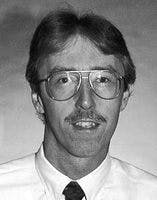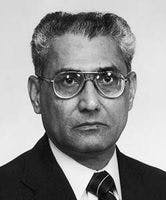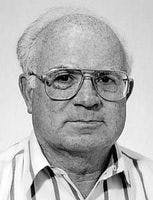Clarke L. Bean, Syed A. AliBorate-crosslinked fluids and/or ceramic proppants commonly included in frac-pack well completions can complicate pulsed neutron capture (PNC) log evaluation.
Chevron U.S.A. Production Co.
New OrleansGeorge N. Salaita
Chevron Petroleum Technology Co.
Houston
PNC logs are routinely run in cased holes. Two common applications include identifying formation fluid and calculating the percent water saturation in the rock pore spaces near the well bore.
PNC logs
PNC tools fire bursts of high-energy neutrons into the borehole and surrounding formation. The neutrons collide with surrounding atoms and lose momentum until reaching thermal energy levels at which they can be absorbed by elements in the near well bore region.
Atoms absorbing a neutron emit gamma rays detected by the PNC tool. The rate at which the neutrons are absorbed, and consequently the rate at which gamma rays are detected, depends on the macroscopic thermal absorption cross section of the elements in the borehole and near well bore areas of the formations.
The PNC log curve Sigma measures the decay rate of gamma rays emitted by these absorbed neutrons. In the formation, Sigma depends on the elements contained in both the pore fluid and matrix.
Chlorine, a major constituent of normal Gulf Coast formation waters, has a large thermal absorption cross section. Chlorine causes rapid decay of thermal neutrons and gamma rays, resulting in a high Sigma. Thus, Sigma measurements can identify formation water.
One PNC log limitation is that shale and its associated trace elements, such as boron and gadolinium can disturb Sigma measurements. These trace elements also have high thermal absorption cross sections.
Many publications discuss methods for interpreting PNC logs with shale problems.1-3 Until now, no information has been reported about the effects of borate-crosslinked fluids and/or ceramic proppants on PNC logs.
Borate-crosslinked hydroxypropyl guar gels and ceramic proppants are often included in frac-pack completions.4
Frac-packing is a relative new completion technique that is generating considerable interest in the Gulf of Mexico area. This technique involves tip-screenout fracturing designs and very high proppant concentrations to ensure adequate fracture conductivity between the reservoir and the well bore.5
Case history
Fig. 1 [54083 bytes] shows an open hole log of a recently drilled well in a West Delta field. The MC sand contains oil. The top lobe is a relatively clean sand but the lower lobes contain varying shale amounts.
Six weeks after drilling the well, the MC sand was successfully frac packed using borate-crosslinked hydroxypropyl guar gel and ceramic proppants. The frac pack was intended to enhance the vertical connectivity of the thinner and shalier lobes.
One week after the frac pack and establishment of oil production, a PNC log (Halliburton Energy Services' thermal multigate decay log) was run to determine a base line Sigma measurement. During the log run, the well flowed 300 b/d of clean oil.
As seen in Fig. 2 [46812 bytes], the Sigma measurements across the MC sand are anomalously high and are consistent with a typical Gulf Coast wet sand.
Consequently, laboratory tests were done to determine whether the log response was due to a faulty logging tool or materials in the frac pack that might cause the anomaly.
Laboratory work
To rule out a PNC tool failure, the vendor checked the calibration, which proved to be proper. Also, the raw gamma ray counts from the PNC data tape were reprocessed with Chevron's proprietary program for calculating a generic Sigma curve. The calculated Sigma values matched the PNC log Sigma values; therefore, flawed PNC data were ruled out as a cause of the anomaly.
Because this was the first frac-pack completion in which Chevron had run a PNC log, the emphasis to explain the anomalous log response was directed at the frac-pack material chemistry. Chemical analysis was done on both the frac-pack fluid and proppant samples.
Sigma values for the borate-crosslinked hydroxy propyl guar were measured in Chevron's neutron cell. Table 1 [50288 bytes] shows that the base brine and polymer has a Sigma value of 27.65 capture units (c.u.). The addition of borate crosslinker and breaker chemicals increases Sigma of the resulting fluid to 34 c.u. (Table 1).
To determine element weight percents, in ppm, the ceramic proppant samples were subjected to elemental analyses by inductively coupled argon plasma spectroscopy (ICAP) and atomic absorption (AA) techniques. From the weight percents and known thermal absorption cross sections for each element, theoretical Sigma values can be calculated for the contribution from each element, then summed to obtain Sigma for the whole compound.
Chemically, the proppants are advertised to be comprised of aluminum and silica, and as such, their expected value for Sigma should be in the range of 4-8 c.u. Table 2 [78082 bytes] shows that along with silica and aluminum, this proppant has small concentrations of lithium, boron, titanium, and gadolinium. These elements have extremely high thermal absorption cross sections.
The combined effects of these trace elements raise the calculated proppant Sigma value to 17 c.u.
Results
The MC sand interval is from 9,912 to 9,948 ft (Fig. 1 [54083 bytes]). The upper zone, 9,912-9,918 ft, is fairly clean sand while the rest is somewhat shaly.
The upper clean sand average effective porosity (fe) is 0.28 and water saturation (Sw) is 0.23. The lower shaly sand average fe is 0.24 and Sw is 0.42. Formation water resistivity (Rw) calculated from uphole sands is 0.046 ohm-m.
At reservoir temperature, this Rw corresponds to a salinity of 70,000 ppm NaCl and a Sw (Sigma for formation water) of 47 c.u. As can be seen in Fig. 2 [46812 bytes], the Sigma in the lower sands ranges from 27 to 30 c.u. These values are typical for a Gulf Coast wet sand with the same porosity and water salinity as measured in the MC sand interval.
Water saturations from PNC logs are calculated with Equation 1 (see equation box).
Assuming that Sw and f do not change between the time the open hole and PNC tools are run (about 7 weeks in this case), Equation 1 can be rearranged as Equation 2 to find the apparent Sma.
In an oil sand, Shc is generally 21 c.u. and, as previously determined, Sw is 47 c.u. This shows that if the PNC tool is operating properly as confirmed by tool calibration, then Sma for the sand is about 24 c.u. Typical Gulf Coast clean sands have values ranging from 8 to 12 c.u. while shaly sand Sma varies between 13 and 17 c.u. This implies that the frac pack changed the formation matrix and/or porosity in the near well bore region.
The purpose of a frac pack is to induce fractures that later are filled with proppants. The fractures will change the porosity; therefore, the PNC tool measures a different porosity than the open hole tools.
To estimate the porosity within a proppant-filled fracture, we assume that the proppant is filled with cubic-packed spheres. Therefore, the fracture porosity would be in the 0.40-0.45 range.
Because the fractures propagate linearly, not radially, the fractures occupy an estimated one third of the near well bore formation volume. Equation 3 shows a good estimate of the lower portion porosity in the MC sand, as measured by the PNC tool.
If Sma was only influenced by the addition of proppant beads, the new Sma could be estimated as in Equation 4. This equation includes the same predicted matrix material volumes and linearly interpolates the PNC log's overall Sma using Sma proppant of 17 and Sma shaly sand of 14.
Equation 5 tests this assumption by calculating a theoretical PNC Sigma using these new parameters. As seen in Equation 5, the calculated Sigma is less than the actual measured lower sand Sigma of 27-30 c.u.
It seems likely then that a significant portion of the boron from the borate crosslinker must have been left behind in the formation. Its disposition is unknown, but it may have adsorbed on the sand grains or proppants.
Table 1 [50288 bytes] shows that after adding borate crosslinkers to fracturing fluid, the fluid's Sigma increases by 6 c.u. If some of the boron from the fluid concentrated in the formation through adsorption, then the logged Sigma observed in the sand would be consistent with this theory.
Observations
Some main observations of this analysis are as follows:
- Frac packing a well with a borate crosslinked gel appears to affect the borehole and creates conditions that make interpreting ensuing PNC logs uncertain.
- When considering a frac pack, a PNC log should be run after establishing production.
If the completion is delayed from the drilling phase long enough so that the flushed zone has been able to re-equilibrate (generally 6 or more weeks), then a PNC log should be run before the frac-pack procedure.
The difference between the two logs should show how the frac pack affected the well bore. The second log will be needed as a base line measurement for accurately interpreting future PNC logs.
- Well A needs to be monitored with PNC logs to determine if Sma remains constant. If boron in the frac pack is the problem, the boron could eventually disappear or even increase over time.
- Breaker chemicals do not completely remove crosslinked gel from the formation matrix.
- Trace elements in the proppants can affect PNC log interpretation. The magnitude of their effect depends on the actual fracture volume in the near well bore region measured by the PNC tool.
Acknowledgments
The authors would like to thank the management of both Chevron U.S.A. Production Co. and Chevron Petroleum Technology Co. for their permission to publish this article. Special thanks goes to George Griffith, Bert Brodie, and Chuck Neuman for their input and help with this article.
References
1. Hoyer, W.A., editor, Pulsed Neutron Logging, SPWLA Reprint Volume, 1979.
2. Neuman, C.H., "Variable Sigma Matrix Method to Compensate for the Influence of Shaliness and Pulsed Neutron Capture Log Response," Paper No. SPE 24738.
3. Stieber, S.E., "Pulsed Neutron Capture Log Evaluation - Louisiana Gulf Coast," Paper No. SPE 2961.
4. McGowen, J.M., et al., "Fluid Selection for High-Permeability Formations," Paper No, SPE 26559, 1993.
5. Meese, C.A., Mullen M.E., and Baree, R.D., "Offshore Hydraulic Fracturing Technique," JPT, March 1994, pp. 226-29.
The Authors
Clarke L. Bean is a senior geologist/formation evaluation specialist for Chevron U.S.A. Production Co. in New Orleans. His current assignment involves interpretation of all open and cased-hole logging tools. Bean has a BA in geology from Albion College and an AM in geology from Indiana University.
Syed A. Ali is technical advisor for Chevron U.S.A. Production Co. in New Orleans. He specializes in sandstone acidizing, formation damage control, rock/fluid interaction, mineralogy, and oil field chemistry. Ali has an MS from Ohio State University and a PhD from Rensselaer Polytechnic Institute.
George N. Salaita is a senior staff research scientist at Chevron Technology Production Co. in Houston. He previously was a professor of physics at Southern Methodist University and worked for Mobil Field Research Laboratory. His research interest is in the application of nuclear methods for well log measurements.
Salaita has a PhD in physics from Virginia Polytechnic Institute and State University, Blacksburg, Va. He is a member of SPWLA, and SPE.
Copyright 1996 Oil & Gas Journal. All Rights Reserved.




